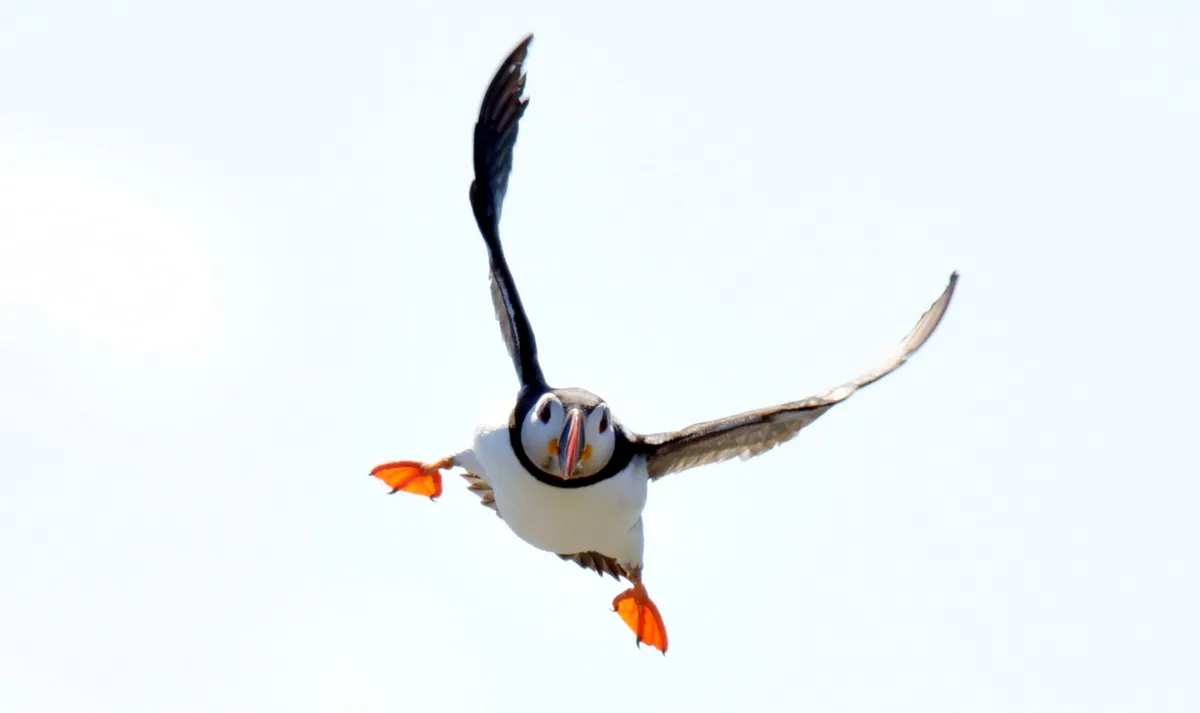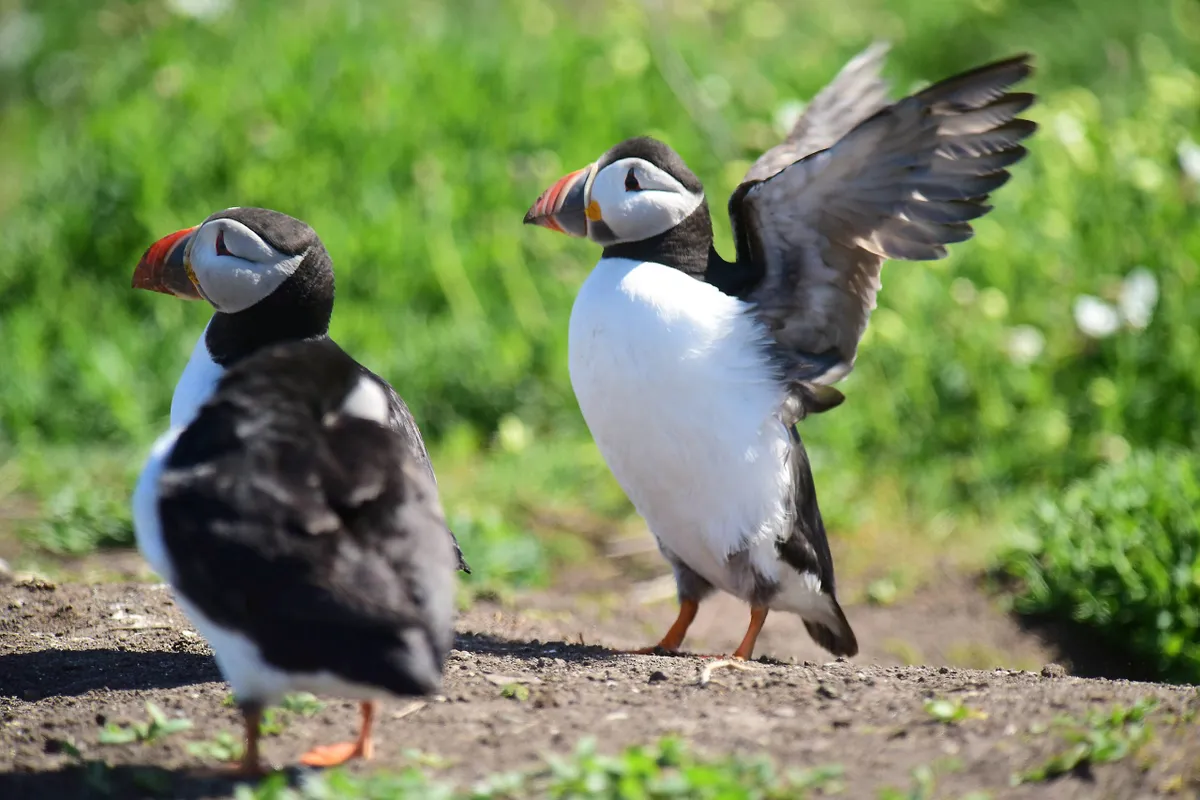Last summer, heavy rainfall resulted in the puffin population of the Farne Islands suffering substantial losses, with burrows being flooded at a time when pufflings were at their most vulnerable. On 13 June, more than 300 young puffins died when 5in (12cm) of rain fell on the islands in just 24 hours.
Yet even in the event of such extreme weather, the birds’ numbers have remained stable, with sufficient numbers of pufflings successfully hatching on the Farne Islands.
During last year’s puffin survey (undertaken by the National Trust), only a marginal decrease of less than 0.5% of the 43,752 breeding pairs was revealed when compared with the results of the 2018 survey.
Although this is great news for the population on the Farne Islands, globally, puffins are in decline.
The Atlantic puffin is listed as ‘Vulnerable’ by IUCN, and is on BTO’s Red List for conservation concern. This decline is in large part due to the reduction in numbers of sand eels — their preferred food supply — which makes up the highest proportion of the puffin’s diet on the islands.
In 2003, the puffin population on the Farne Islands peaked at 55,674 pairs, but then crashed in 2008, predominantly due to a lack of the eels.
Climate change could be a key factor in contributing to such food shortages, while extreme weather, overfishing, invasive predators such as rats, and marine pollution also play a role.

However since 2008, the puffin population has slowly been recovering on the islands. The birds have traditionally done well here due to a number of factors, including the work of rangers, the protection of the marine area around the islands, the lack of ground predators, and the availability of suitable nesting areas.
But there are concerns that the puffin population here, and elsewhere, will remain vulnerable to the effects of climate change.
Because of this, the National Trust has taken the decision for their 11-strong ranger team to monitor puffins on the Farne Islands annually, rather than once every 5 years, as was previously undertaken.

National Trust ranger Thomas Hendry explains, “Switching to the annual survey in 2018 has given us year-on-year data for the first time, and it’s allowing us to monitor the puffin population and breeding behaviour much more closely.
“The annual survey is also allowing the rangers get a better picture of the causes of seabird declines, tracking puffin numbers against likely causes of population change from island-based factors such as seal distribution or predatory gull numbers to changes in the frequency of storms and summer rainfall as a result of climate change or changes in the sand eel population.”